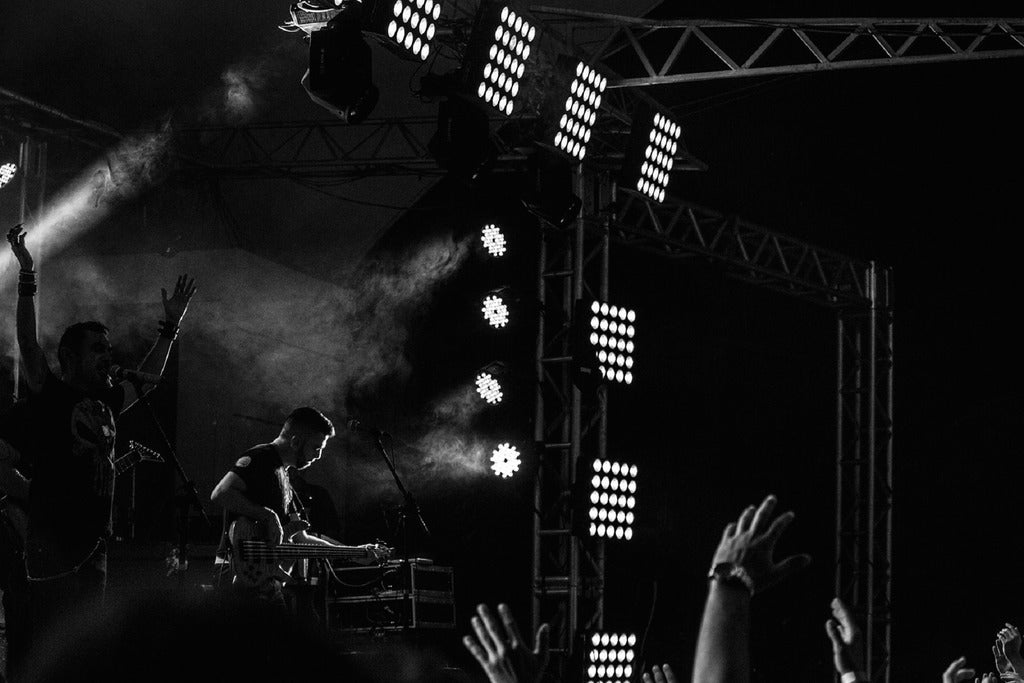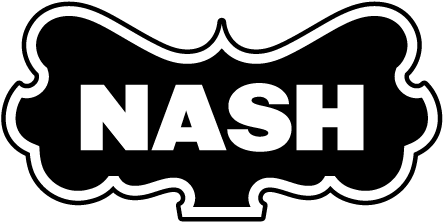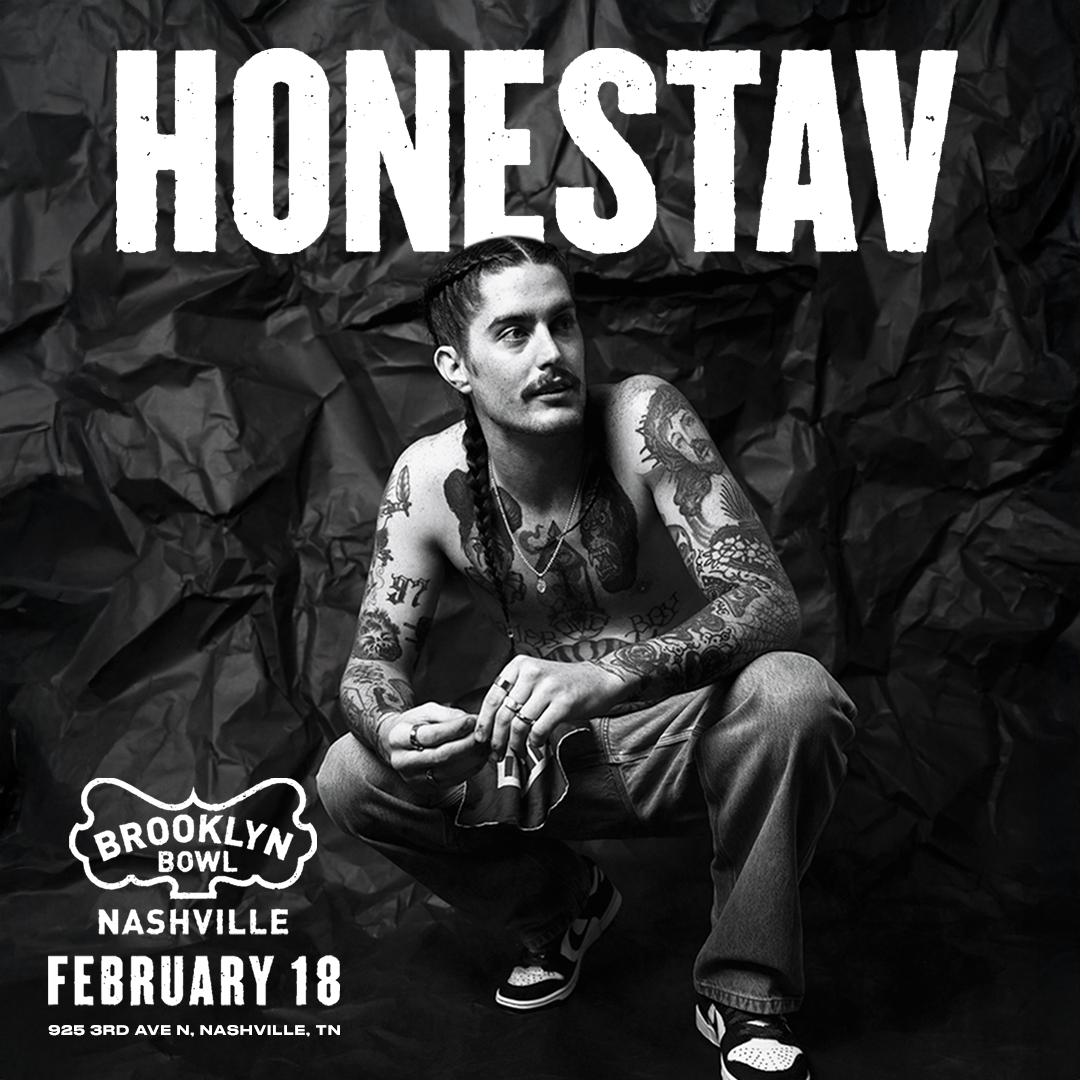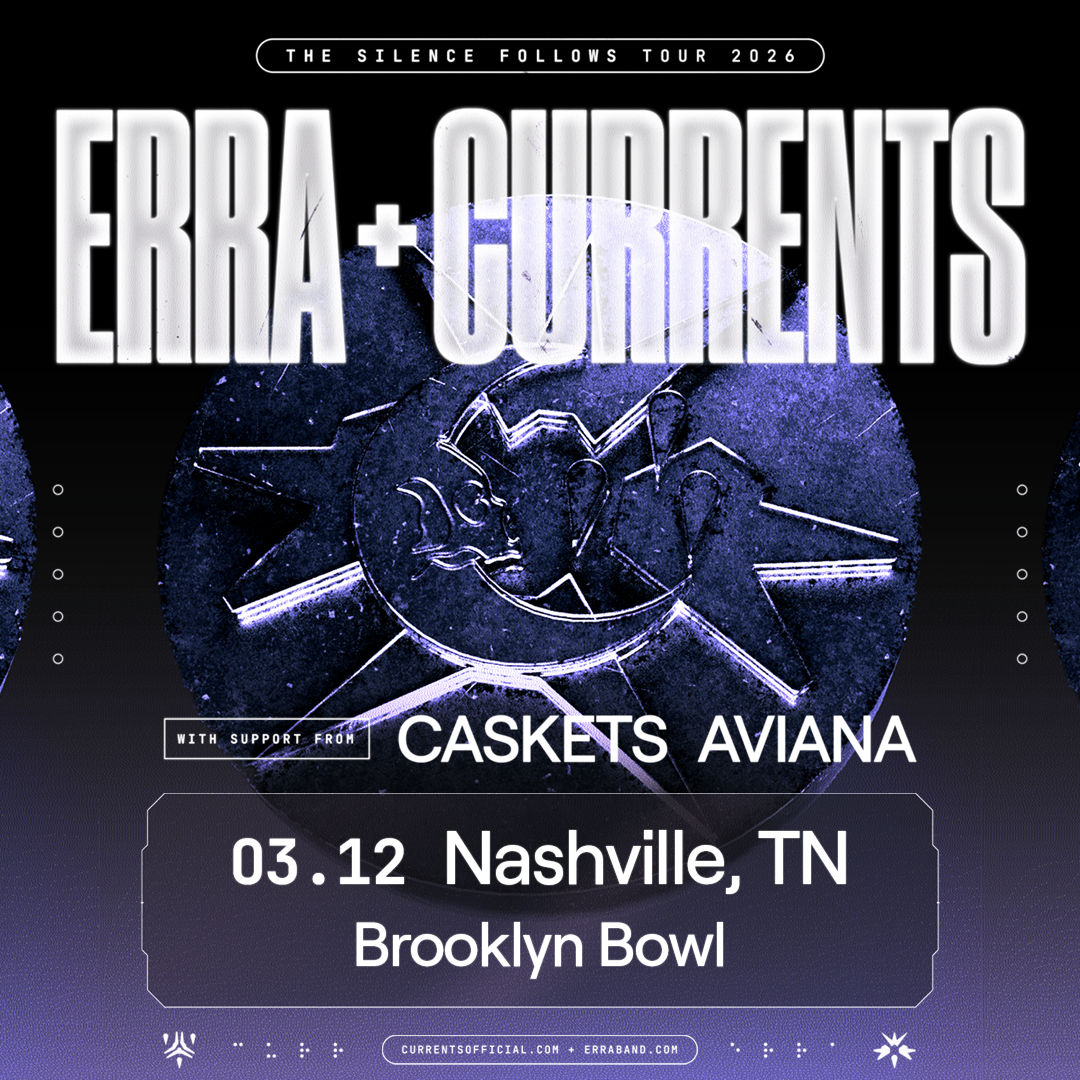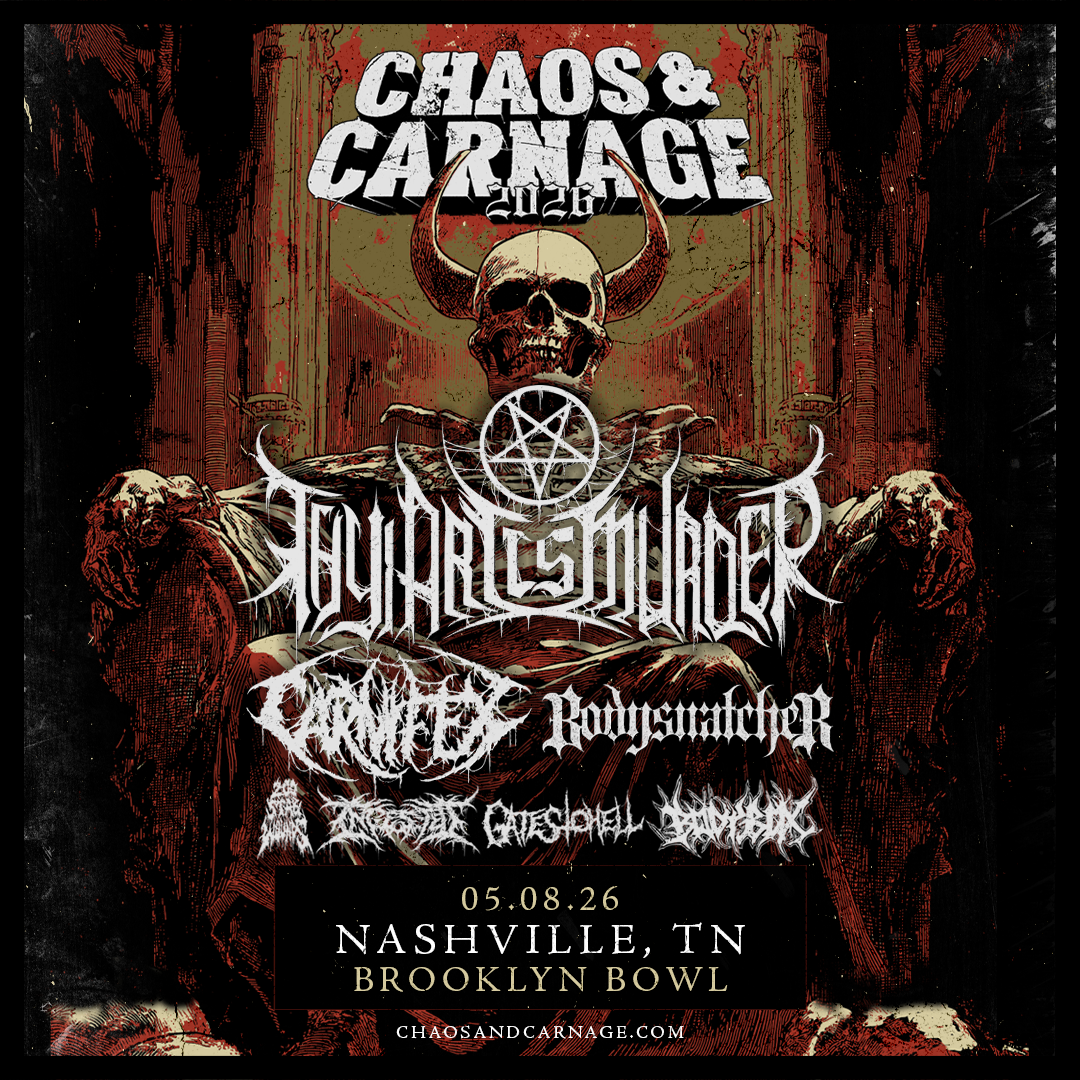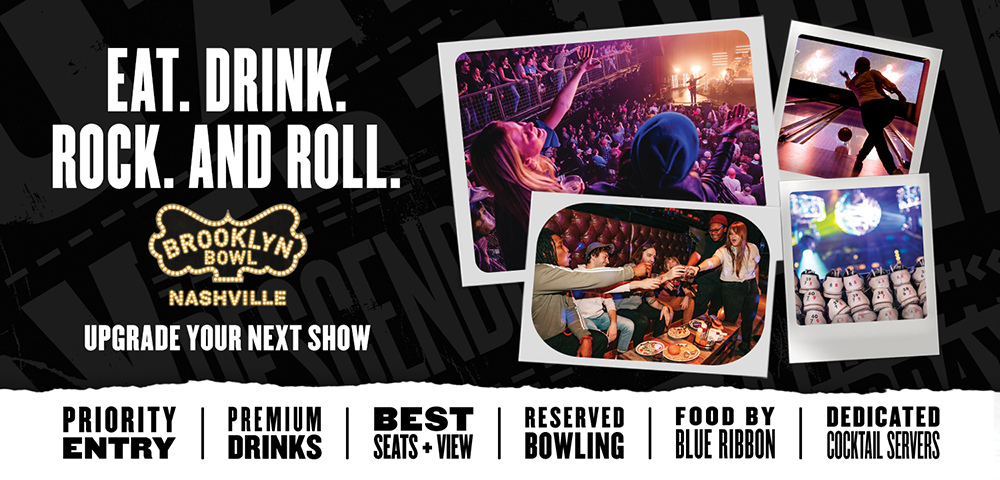Khruangbin
Liz Cooper
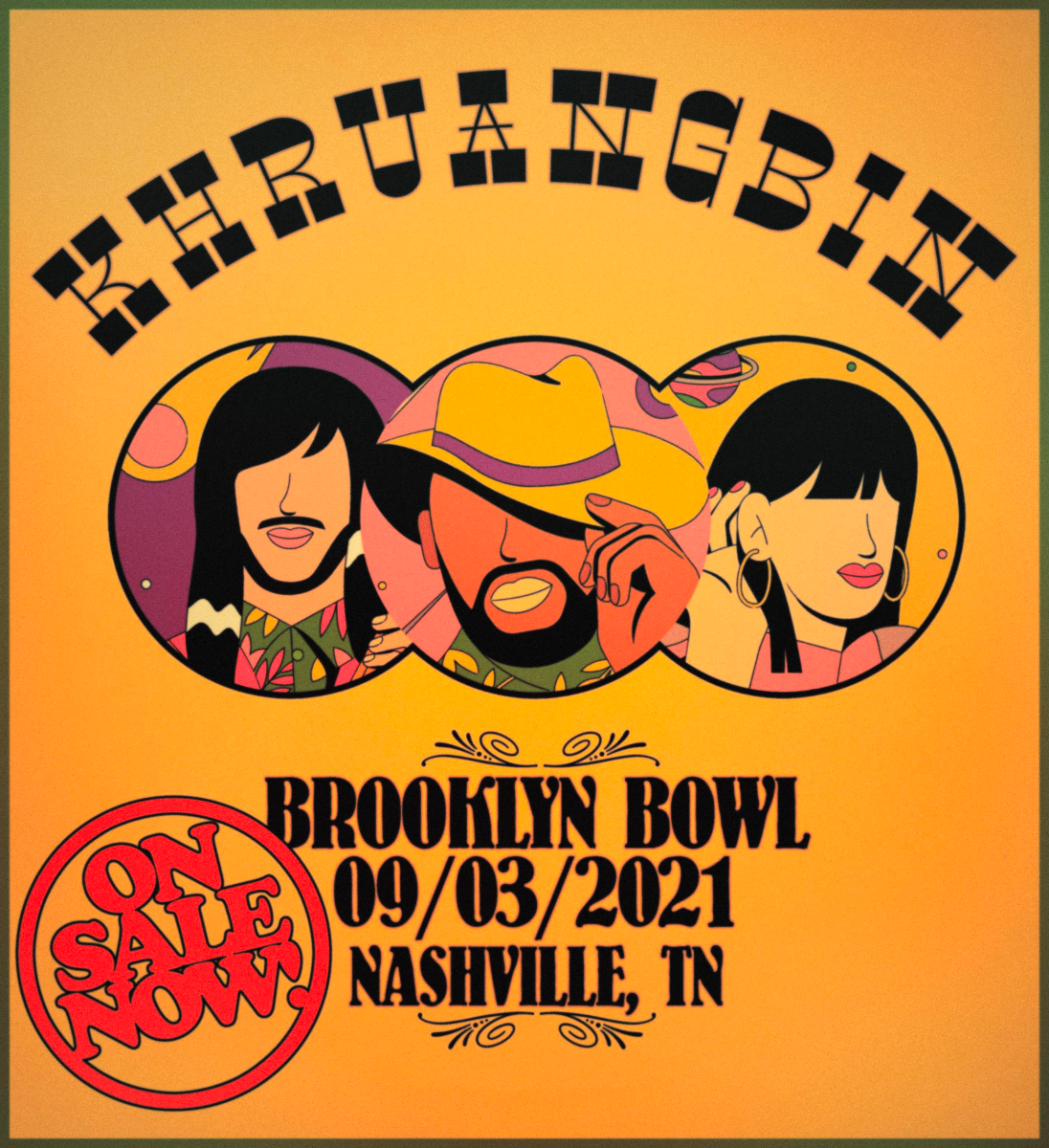
Event Info
Brooklyn Bowl Nashville
925 3rd Avenue North
Nashville, Tennessee 37201
Because of the rise in cases due to the delta variant, a special COVID protocol is required for everyone that will be in attendance for Khruangbin on 9/3/21 at Brooklyn Bowl Nashville. You, and anyone accompanying you in your party, are required to provide ONE of the following:
Proof of your vaccination record (vaccination card or picture of your card with a matching ID card), demonstrating you were fully vaccinated at least two weeks in advance of the day of show. OR proof of a negative COVID test, administered within 72 hours of the day of show, with matching ID card.
The city of Nashville is offering free testing (Monday - Friday, 8am-2pm) at 2491 Murfreesboro Pike, Nashville, TN 37217 (former K-Mart parking lot). For more information on the specific testing site, please visit this link here: https://www.asafenashville.org/test-mask-resources/.
Khruangbin and Brooklyn Bowl encourages mask wearing and encourages you to get vaccinated if you aren’t already!
By purchasing a ticket you are acknowledging you will be required to show proof of vaccination or negative test result. There will be no refunds for tickets purchased, due to specific venue covid-19 protocol. If you receive a positive test before the show, please reach out to nashvilleboxoffice@brooklynbowl.com and we will help facilitate a full refund.
If you have any questions or concerns, please reach out to us at nashvilleinfo@brooklynbowl.com.This event is 18+ Anyone under the age of 18 must be accompanied by a parent or guardian
Valid photo ID required at door for entry
This event is general admission standing room only.
Doors: 6:00 PM
Show: 8:00 PM
Onsale Schedule
Artist Info
KHRUANGBIN
“‘A La Sala,’ I used to scream it around my house when I was a little girl, to get everybody in the living room; to get my family together. That’s kind of what recording the new album felt like. Emotionally there was a desire to get back to square-one between the three of us, to where we came from–in sonics and in feeling. Let’s get back there.” - Laura Lee Ochoa
The title makes it clear. A La Sala (“To the Room” in Spanish), the fourth studio album by Khruangbin, is an exercise in returning in order to go further, and do so on your own terms. It extends the air of mystery and sanctity that’s key to how bassist Laura Lee Ochoa, drummer Donald “DJ” Johnson, Jr. and guitarist Mark “Marko” Speer approach music. Yet if 2020’s Mordechai, the last studio album Khruangbin made without collaborators, was a party record whose ensuing post-lockdown tour enhanced the band’s musical reputation far and wide, A La Sala is the measured morning after. It’s a gorgeously airy album made only in the company of the group’s longtime engineer Steve Christensen, with minimal overdubs. It is a porthole onto the bounties powering Khruangbin’s vision, a reimagining and refueling for the long haul ahead. A La Sala scales Khruangbin down to scale up, a creative strategy with the future in mind.
It is also a response to the unique moment Khruangbin finds itself in now: following a decade spent cultivating extraordinary music paths, beginning a year when they'll perform for more people, in more iconic spaces, staging a live show that pushes a creative envelope peculiar to them alone. (Look for the band at major festivals and venues near you.) 2024 feels like both marker and pivot, cementing Khruangbin’s stature as a commercially and critically successful group that continues to be guided by creative possibilities.
Such crossroads are familiar for iconic artists throughout the rock era — your Dylans, Stevies and Bowies, up thru turn-of-the-century Radiohead, all have navigated these straits. On A La Sala, Khruangbin also pulls exploration inward, spurning the din of the crowd’s expectations, mapping a personal direction home. The trio’s collective musical DNA and the years spent constructing it in Houston’s local-meets-global cultural stew ensure the band carries on sounding like no one but itself. A La Sala may in fact be Khruangbin’s purest distillation. A cascade of crisp melodies still emanates from Marko’s reverb-heavy electric, dancing gently around Laura Lee’s minimalist almost-dub bass triangles, while DJ’s drums serve as the tightened-up pocket and unwavering dance-floor on which all this movement takes place.
Where prior album-by-album growth seemed to point the narratives towards music’s polyglot edges, such inquiries now sound like known intimacies. What once seemed like sonic invocations — spaghetti-western film scores, found-sounds, dancing moments more living room than rooftop disco — are ingrained characteristics. This is who they are! And there’s a freshness to the instrumental interactivity on A La Sala that’s less concerned with getting further out than going deeper in. That depth is not about therapeutic self-reflection, but a profound desire to celebrate the world’s external wonders.
A La Sala invites intimate intercontinental partying. The first single is, after all, called “A Love International.” “Pon Pón” holds the band’s table at the West African discotheque; yet the joy now moves to the corner left of the dancefloor, where the back-and-forth between Laura Lee’s bass, DJ’s hi-hat, and Marko’s tuneful rhythm scratches, is a marvel of knowing head-nods. There’s “Hold Me Up (Thank You),” a familial sweetness in its spare lyrics, feeding off the rhythm section’s sturdy funk shuffle, and a chorus on which Marko’s guitar evokes both sides of the Atlantic in confident unshowy rhythms. They’re on “Todavía Viva” too, next to DJ’s noir-soul rim-shots, synth strings and a pregnant pause that is Laura Lee’s favorite moment on the album, the mood kin to the band’s glorious live interpretations of G-funk fantasias. And the rocked-up miniature, “Juegos y Nubes,” demonstrates Khruangbin’s Houston-born superpower to culture-mix, a dancing mood less concerned with worldly glamor than communal grooving.
“I read something long ago, attributed to Miles Davis. He said, ‘When they play fast, you play slow. When they play slow, you play fast.’ And it's definitely how I've approached looking at music: Don't follow the trends. And if the trend is this, then do something else.” - Marko
From the get-go, Khruangbin’s journey has been emphatically its own: a sound and visual representation with few precedents, ignoring pop expectations, relying only on internal inspirations, and a multitude of visions. It’s a mindset of penetrating the self, connecting to the surrounding world, modeling your own life experiences. This ethos is threaded throughout A La Sala, audible in the album’s form and function. (It’s even visible in the vinyl version’s physical package, which will be released as a set of seven distinctive covers and color-sets — more on which in a sec.)
The building blocks for the album’s 12 songs were jigsaw pieces found in Khruangbin’s creative past. Having stockpiled ideas originally set down as off-the-cuff recordings (voice-memos made at sound-checks, on long voyages, as absentminded epiphanies), they began fitting those pieces together in the studio. Which parts were apt? Which could be massaged and stretched out? Which inspired new sections or rhythms or musical interactions? Once more, Khruangbin’s familial DNA kicked in. Layer-by-layer, the intimate work, rework and re-rework bore new fruit. They also brought back a strategy once foundational to their records: seeding an album with field recordings.
Some results fold directly into A La Sala’s down-home feel. “Three From Two” and “May Ninth” are wistful mid-tempo numbers, with guitar melodies that reside somewhere between Bakersfield and by-the-riverside, cues that, for all its borderless inclusivity, another core Khruangbin value is being steeped in American roots. And in the landscape that music comes from. Like all albums prior to Mordechai, Marko made sure environmental sounds — natural and man-made — appeared as textures. (At times philosophically: the group recorded while cricket chirps played in their headphones, presumably for terroir.) It’s how A La Sala achieves such interconnected set-and-setting-ness.
Other results are more metaphorical, especially in Khruangbin’s flirtation with ambient spaces. The dramatically beatless “Farolim de Felgueiras” and “Caja de la Sala” both feature only Marko’s unmistakable guitar dueting with Laura Lee’s Moog, lightly layered with sounds of shoes on stone steps, and cicadas in an open field. The closing “Les Petits Gris” more fully reduces and fleshes out the ambiance, with a piano and a simple single-note bass pattern, Marko’s plaintive spare guitar echoing the melody of a ballerina-turning music box. It feels an apt way of ending — as a passing of this particular moment, preparation for the next one, soon-come.
Even the seven different covers that adorn A La Sala’s various vinyl editions offer a throughline from the music into Khruangbin’s current frame. Designed by the band using Marko’s multitude of travelog photos, they are windows from the band’s living room onto a set of daydreams, scenes of impossible skies, external glances illuminating what is going on inside. These are also directly related to David Black’s images of DJ, Laura Lee and Marko which accompany A La Sala, and to Khruangbin’s live staging reinvention. It’s all about looking out and looking back, in order to better look ahead.
“All the little moments you capture. You don't see how impactful they are until you hear what eventually comes of them. A lot of those scraps end up being the thing — and you don't realize it until it's ‘The Thing.’” - DJ
Liz Cooper
Hot Sass marks multiple departures for Liz Cooper: from her nine-year home of Nashville, from her band addendum of the Stampede, from any genre-burdened expectations she'd accumulated over the years. After heavy touring in support of 2018's Window Flowers, where her songs stretched out in live settings, she felt constricted by the Americana-adjacent associations that the Stampede carried. So with her bandmates' blessing, she dropped the moniker, pursuing sounds and songs that let her chase the inspiration lent to her by the likes of Courtney Love, Lou Reed, and David Bowie.
In Burlington, Vermont, Cooper and her cohort -- Ryan Usher, Joe Bisirri, and Michael Libramento -- recorded Hot Sass at Little Jamaica, the personal studio/private residence of producer Benny Yurco (Michael Nau). The intimacy of the space and the players' provided a wide-open approach to Yurco's live setup for rolling forward with minimal takes, a sensibility abetted by a whole lot of psychedelic mushrooms consumed in the process. Cooper recorded her guitar parts from the kitchen and living room while Usher played drums in a bedroom.
Completing Hot Sass, Cooper realized she needed a change of scenery from her longtime home of Nashville, where she'd lived in a freewheeling house of itinerant artists known as the Pennock Palace. She settled in Brooklyn at the beginning of March 2020, and found herself confronted with the new challenges of staying still as touring ground to a halt.
"I'm learning more about how to take care of myself -- just facing the darkness head on that I've been running from by being on tour and being so busy my whole life. It's taught me more about what kind of artist I want to be and what kind of person I want to be," she says.
But now, Hot Sass is crackling into public life, charging forward with Cooper's revitalized creative energy. Her Nashville confidant Daniel Yocum, a painter and friend who collaborated with her on the music videos for Hot Sass, first encouraged Cooper to pick up the practice for herself. She's finding new mediums to explore in paints and pedals, discovering even more exciting, untamed space to be herself.
Where did the concept of "hot sass" come from, and how did it become the central focus of your record?
It's something that scares me. It's another part of myself that I'd never really show. It's something that pushes me that goes hand in hand with me not hiding behind a band's name anymore. It is this other side of me, this wild side.
I feel like it is this madness that I've been more comfortable with accepting and like, this fucking attitude that I do possess that I've been hiding from. It's this confidence and sexiness, it's something that I've always been very afraid of. It's me learning about what kind of woman I am and It's not pretty all the time. It's not this thing that you can put in a box. I'm inspired by women who speak their mind, and who don't give a fuck what people think about them.
There's a sense of restlessness that carries across the record, and right after you finished it, you left Nashville for New York. How did that feeling make its way into the songs?
A big thing about touring is how you're not really able to reflect, you're just so in the moment all the time, and you're always surrounded by people. I am an introvert, and I feel like I have to refuel by being by myself, which is literally impossible when you're on the road. I was exhausted. But I think it's also a lot of growth and just learning about myself and trying to be confident. I've always struggled with my confidence and self worth, and facing that.
What was your approach with beginning to write Hot Sass? Where were you trying to push yourself musically?
Really what the beginning of it was, was, very organically and naturally, I met Benny Yurco, who is a fucking creative genius. I just texted him one day, and I was like, "I want to make a record with you." And he was like, "Let's do it." So really that was the beginning push for me to be creating with an artist that I really respected. I knew I had to really bring it for him and for myself.
I wrote this album on the road and any chance I could find, so in between soundcheck and the show, I would hide in the van, or I would write in motel bathrooms. Whenever I'd get home for however long, which is not usually very long, I would just dive in and write.
As soon as we got to Benny's, it was this complete safe haven. All of us trust each other so much, and we let our guards down completely. We flew through recording these songs and tracked the drums, the bass, guitar, and vocals all live. There was no intention besides just making the best song and without any ego.
You spent a few years touring pretty heavily, even by a lot of musicians' standards, and you recorded most of Hot Sass live as a group. How has it been going without that kind of in-person energy for the last year or so?
This is the longest I've gone without playing music my entire life. It's been really important for me, because music is my spirituality and my release, and I've never not had it. To take that away has been a total withdrawal, and an incredible emotional roller coaster to be in an unfamiliar city with that.
It affected me a lot. I know that I needed that break, because it made me learn more about myself: "Okay, well, if I can't just chase this thing all the time, who am I without music? I'm still learning."
What has picking up painting meant to you over the last few years?
I've just been finding my voice with it just like music. And I definitely have ideas of how I want to push boundaries with it. It's just another way to expose my insides which scares me but also makes me feel whole and healed. I love to paint because I don't feel any pressure from myself or from anyone else. It's just fun and it's pure. Purely expressive. If I make something that is horrifying and super shitty, I don't care. You move on, and you learn from it. And that's it. Daniel [Yocum] is the one that really made me fall back in love with it. We push each other, and we're gonna do some collaborations with visual art beyond videos, see what we can dream up in the painting world.
What do you most want to get across with this record?
I'm not sure if there's anything specifically that I'm aiming to get across. I'm still processing these songs. Still reflecting. And I think that's the thing -- Hot Sass is just a stamp in time of what was happening in my life. I just want to continue making art that displays myself, the moments, and the people around me.
